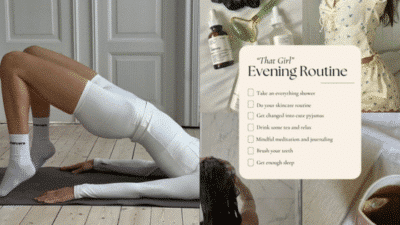A girl’s evening routine for relaxation is all about creating a calm space to unwind after a busy day. It helps her feel ready to rest and prepares her mind and body for a good night’s sleep. Simple habits like skincare, wearing cozy pajamas, and gentle activities can make a big difference in how relaxed she feels.
The routine should be easy to follow and focused on self-care. Activities like lighting a candle, listening to soft music, or reading a book can create a peaceful mood. By choosing calming actions, she can let go of the day’s stress and enjoy quiet moments before bedtime.
When she takes time for herself each evening, it not only improves rest but also makes the next day feel more manageable. Starting a relaxing routine can be a small but powerful way to build better mental and physical well-being every night.
Creating a Relaxing Atmosphere
A calm and peaceful space helps set the mood for relaxation. Soft lighting, soothing scents, and a tidy area all play a part in making it easier to unwind after a busy day.
Lighting and Ambience
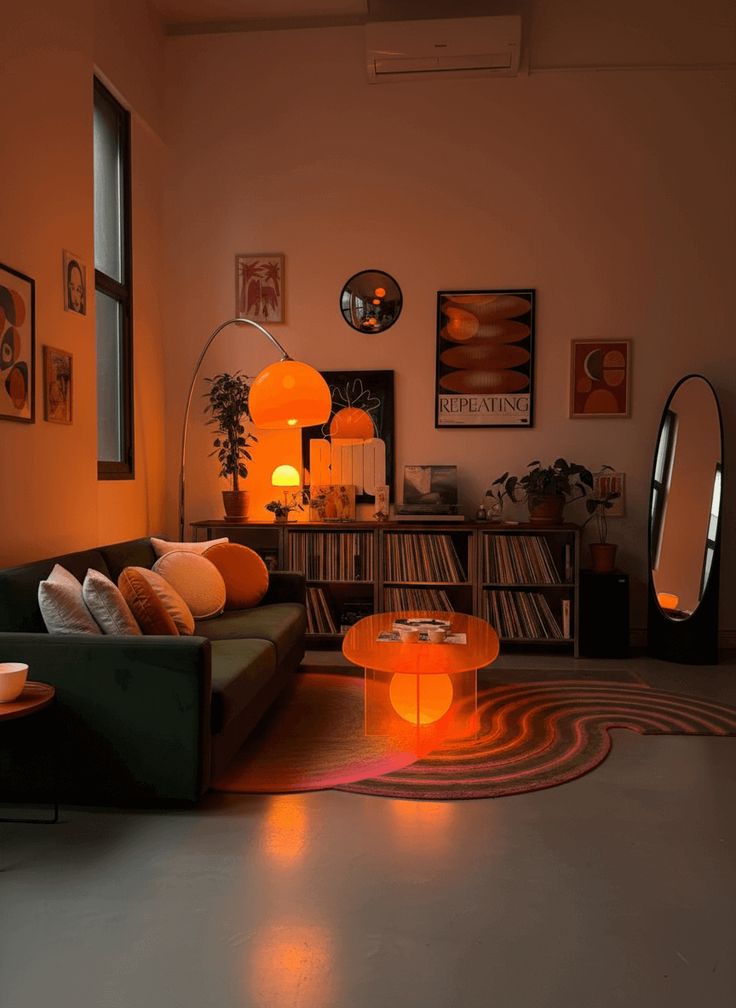
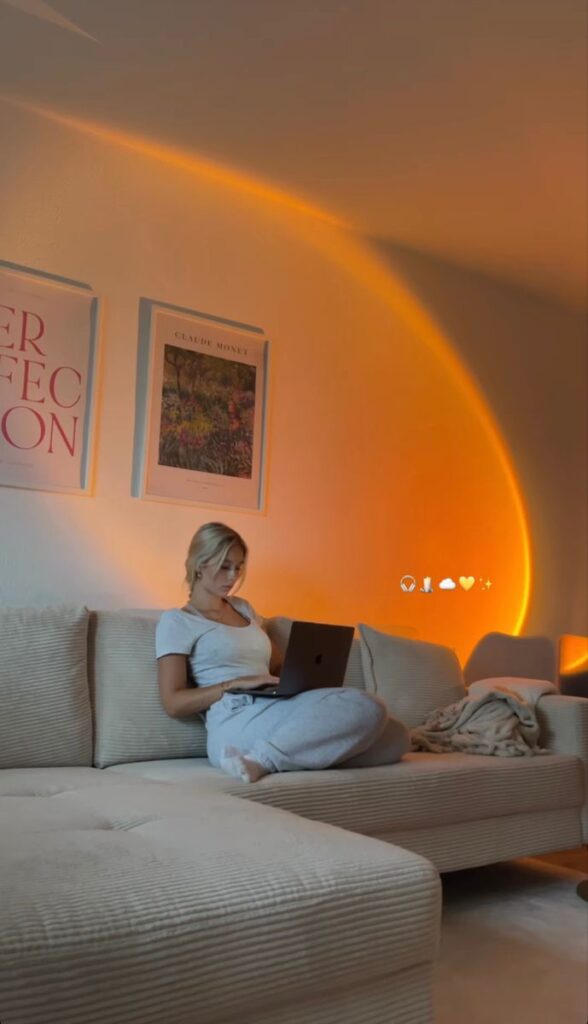
Gentle lighting is key to creating a cozy, relaxing vibe. Dim lights or warm-toned bulbs work best because they are easier on the eyes and signal the body to start winding down. Avoid bright, harsh lights that can feel stressful or keep the mind alert.
Using string lights or candles can add a soft, comforting glow. A small lamp with adjustable brightness is also a great option. Keeping lights low about an hour before bed helps the body prepare for sleep by increasing melatonin production.
Natural light from a window during sunset can boost peaceful feelings too. She might close heavy curtains after dark to block outside distractions and keep the room calm.
Aromatherapy and Scents

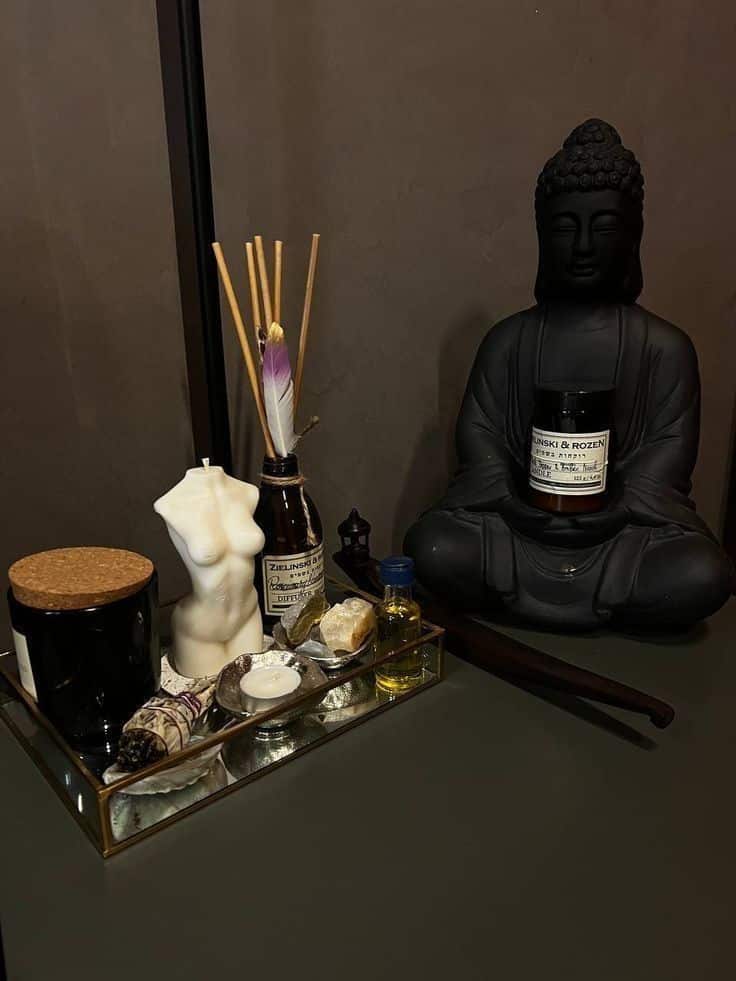
Certain scents help promote relaxation and create a peaceful atmosphere. Lavender is popular because it’s known to reduce stress and encourage sleep. Chamomile and sandalwood also work well for calming the mind.
Using essential oils in a diffuser spreads these scents softly throughout the room. Alternatively, lighting scented candles or adding a few drops of oil to a warm bath can make the space feel inviting.
Drinking herbal teas like chamomile before bed adds to the relaxing effect. It’s best to avoid overpowering or spicy smells that might cause alertness or discomfort.
Decluttering the Space

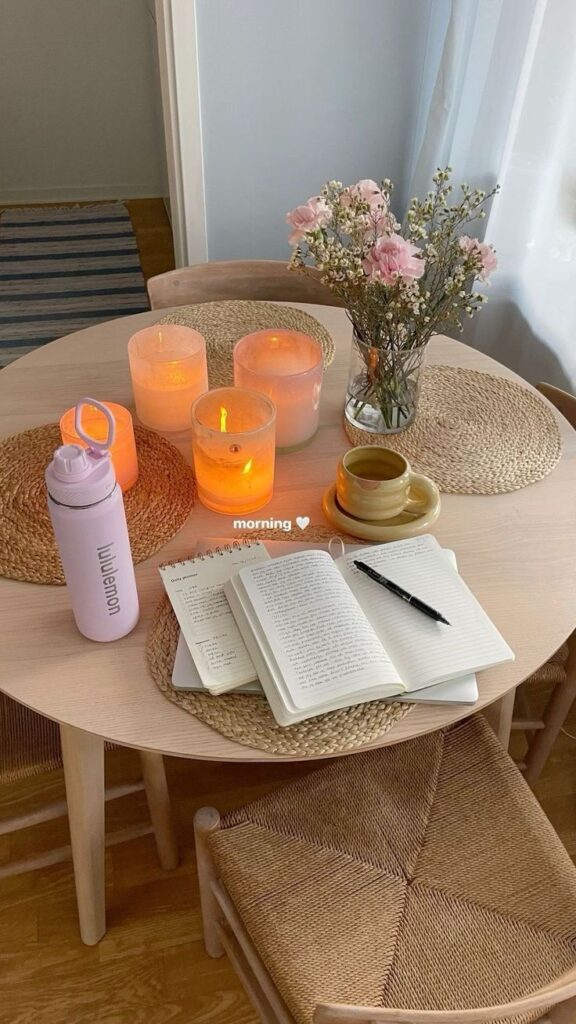
A tidy room helps clear the mind and lowers stress. Clutter can make the space feel chaotic, which works against relaxation. Spending a few minutes putting away items or organizing personal things creates order.
Keeping surfaces clear, like desks or nightstands, prevents distractions. Soft blankets and pillows arranged neatly add to the comfort without making the space feel messy.
She might also choose calming colors like soft pastels or neutrals for the room to enhance the peaceful feel, making it a safe place to rest.
Unwinding After a Busy Day
Relaxation after a busy day starts with small, intentional steps. These help calm the mind and body, making it easier to let go of stress. Comfort, gentle movement, and focused breathing work together to create a peaceful evening atmosphere.
Changing Into Comfortable Clothes

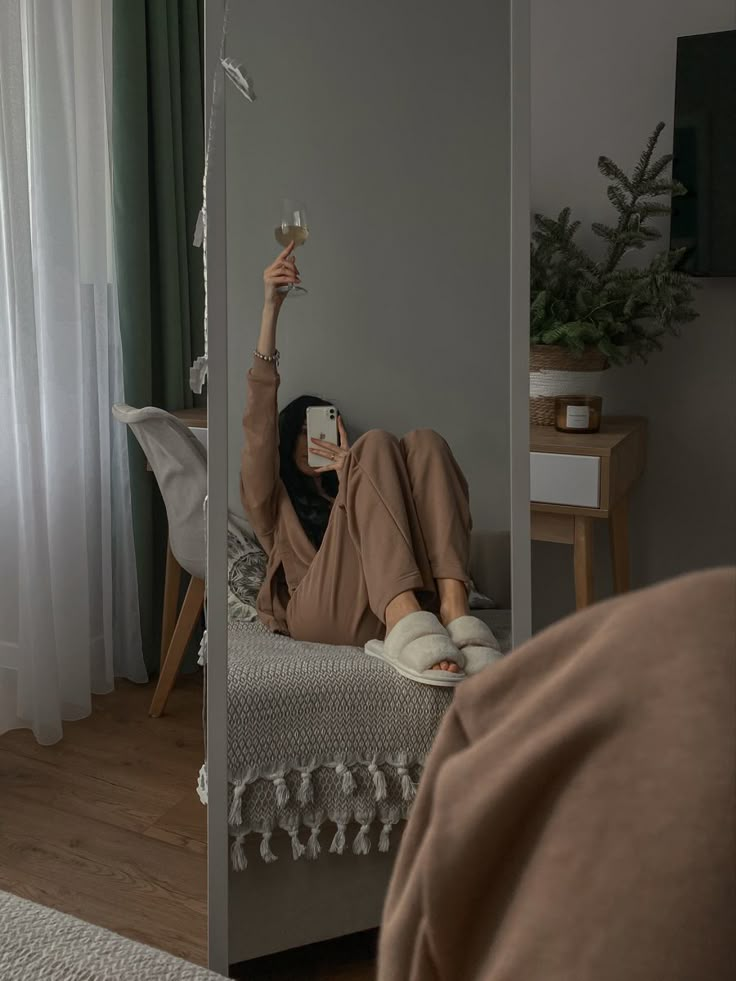
One of the first steps to unwind is switching out of work clothes and into something soft and cozy. Clothes made from breathable fabrics like cotton or bamboo help the skin relax and reduce irritation. Loose-fitting pajamas or sweatpants allow the body to ease tension built up during the day.
Changing clothes sends a clear signal to the brain that the workday is over. This simple act helps shift focus away from stress or responsibilities. Having a favorite cozy outfit ready can make this transition quicker and more inviting.
Gentle Stretching or Light Yoga


Moving the body slowly helps release tight muscles from sitting or standing all day. Gentle stretching or light yoga poses, like child’s pose and cat-cow stretches, can promote relaxation without causing strain. This movement increases blood flow, which helps reduce fatigue.
Yoga does not need to be intense in the evening; it is about calming the nervous system. Using props such as yoga blocks can make the stretches more comfortable. Ending the session with a few moments in a restful pose helps deepen the sense of calm.
Mindful Breathing Techniques
Slowing down the breath is a powerful way to reduce stress quickly. Mindful breathing means paying attention to the inhaling and exhaling rhythm without trying to control it forcefully. Techniques like box breathing—inhale for four seconds, hold for four, exhale for four, and pause for four—help steady the mind.
Practicing mindful breathing releases tension in the body and helps lower heart rate. It can be done sitting or lying down, making it easy to fit into any evening routine. Even five minutes of focused breathing can clear the mind and prepare the body for restful sleep.
Skin and Body Self-Care
Taking care of skin and body is a key part of winding down in the evening. Focusing on cleansing, soothing baths, and gentle massages helps relax muscles and calm the mind. These simple steps create a peaceful transition from a busy day to restful night.
Evening Skincare Routine
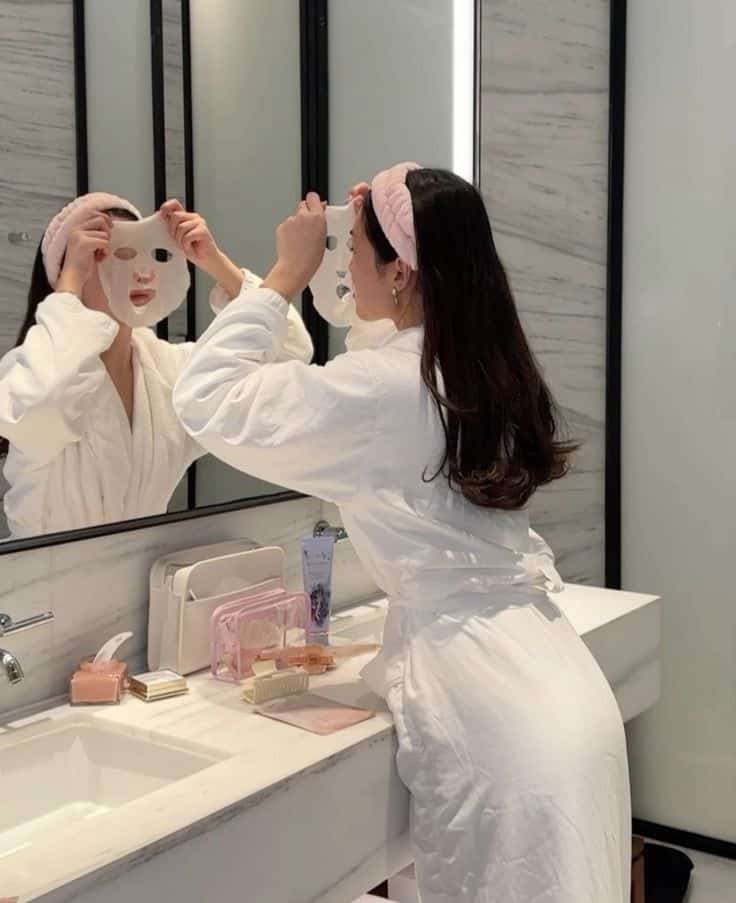

A good evening skincare routine starts with removing makeup and dirt with a gentle cleanser. This clears pores and refreshes the skin. After cleansing, applying toner can help balance the skin’s pH.
Next, using a serum or treatment that targets specific concerns, such as dryness or dullness, supports skin health. Moisturizer is important to lock in hydration and protect the skin barrier overnight. Eye cream can also soothe tired eyes.
Taking time to massage these products in helps boost circulation and gives a moment of calm. This routine supports clear, glowing skin and can feel like a small, quiet ritual before bed.
Relaxing Bath or Shower
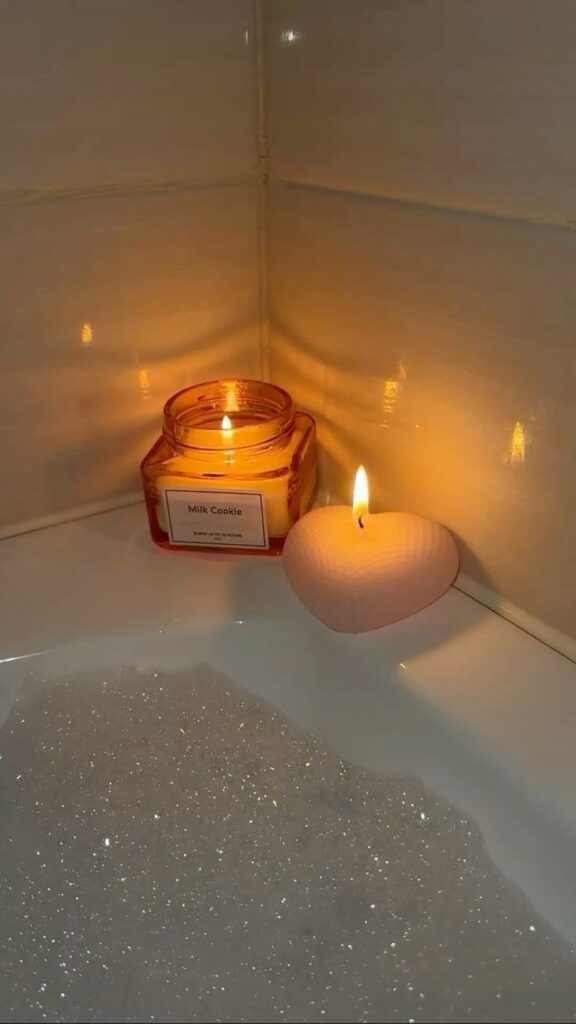
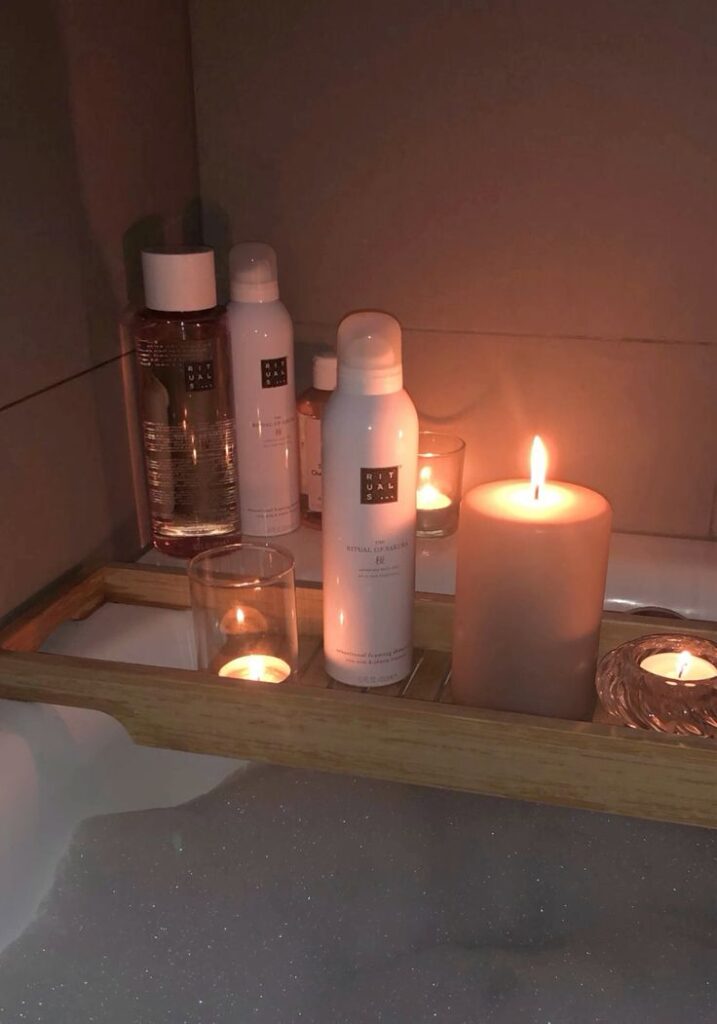
A warm bath or shower in the evening helps release tension in muscles. Adding calming scents like lavender or chamomile through bath salts or oils enhances relaxation.
Soaking for 15-20 minutes gives the body time to unwind. Using gentle, moisturizing body wash helps maintain skin softness. After drying off, applying a rich body lotion or oil seals in moisture.
The heat from the water also improves blood flow, which can ease stiffness. This simple act of care can lower stress and prepare the body for better sleep.
Self-Massage for Tension Relief
Self-massage is a great way to ease muscle tightness and encourage relaxation. Using firm but gentle pressure, focusing on tired areas like shoulders, neck, and hands works well.
A body oil or lotion makes the massage smoother and helps the skin feel nourished. Techniques like circular motions or kneading can help release knots and reduce soreness.
Spending 5-10 minutes on self-massage before bed clears physical tension. This practice also signals to the brain that it’s time to relax, helping calm the nervous system and promote restful sleep.
Nourishing the Body
A good evening routine includes caring for the body with gentle food and drink choices. Eating something light and hydrating properly helps the body relax and prepares it for restful sleep.
Preparing a Light Evening Snack
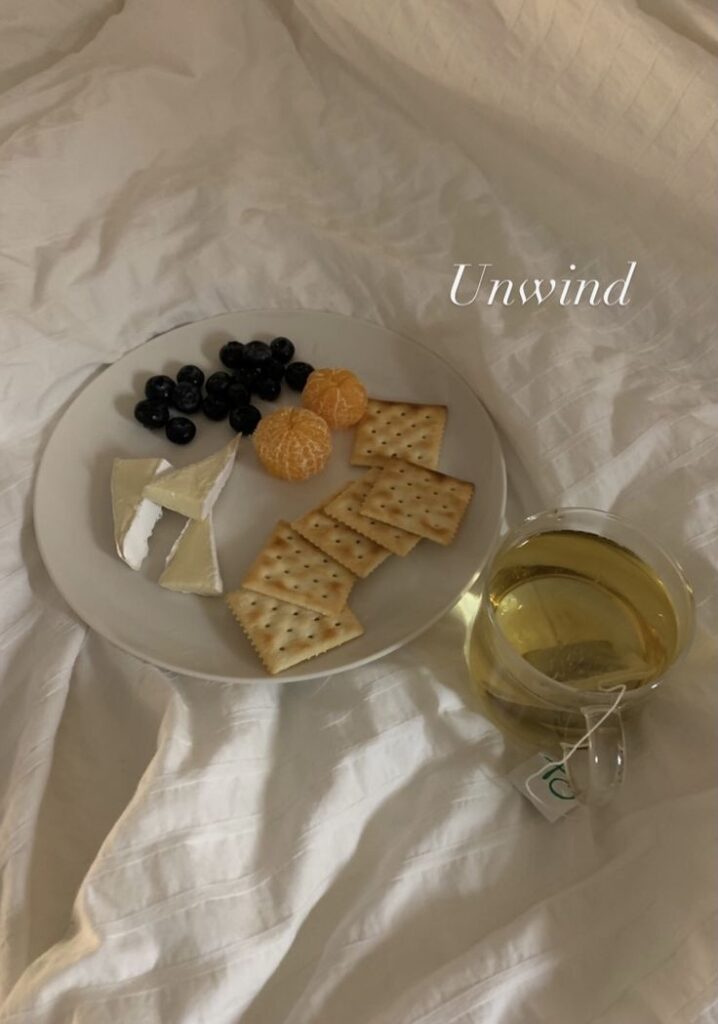
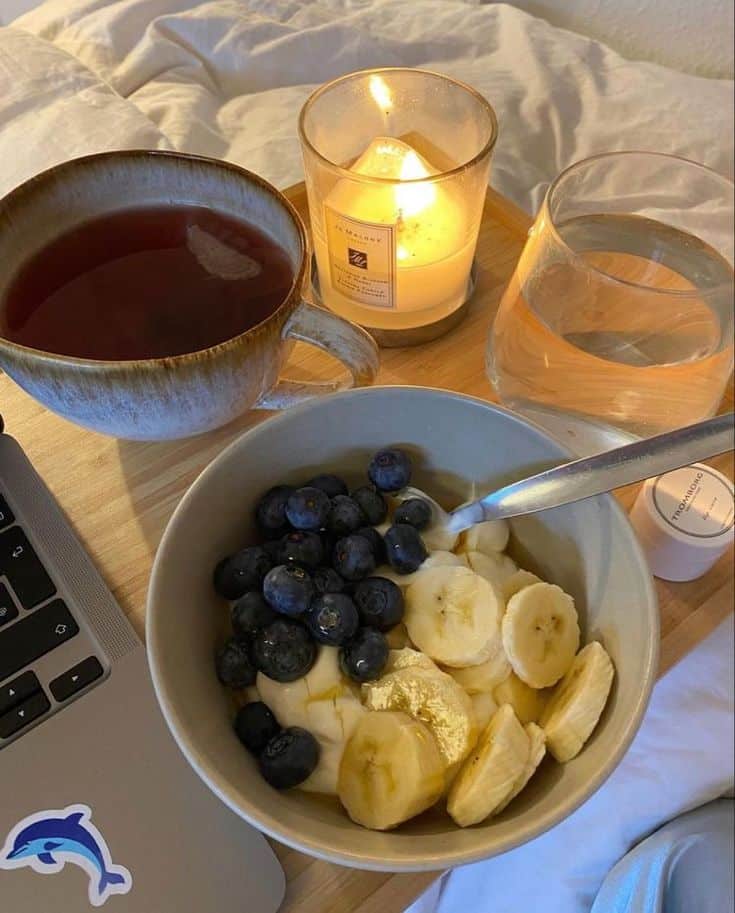
Choosing a light snack in the evening can support better sleep and comfort. Foods that are easy to digest and low in sugar or caffeine work best.
Some good options include:
- A small bowl of yogurt with honey
- A handful of nuts like almonds or walnuts
- Sliced fruit, such as apple or banana
- Whole-grain crackers with cheese
Avoid heavy, greasy, or spicy foods that can cause discomfort or indigestion. Eating too close to bedtime is not recommended; it’s best to have the snack at least 30 minutes before going to sleep. Light snacks with protein and fiber help keep blood sugar steady and calm the stomach.
Hydration Habits Before Bed

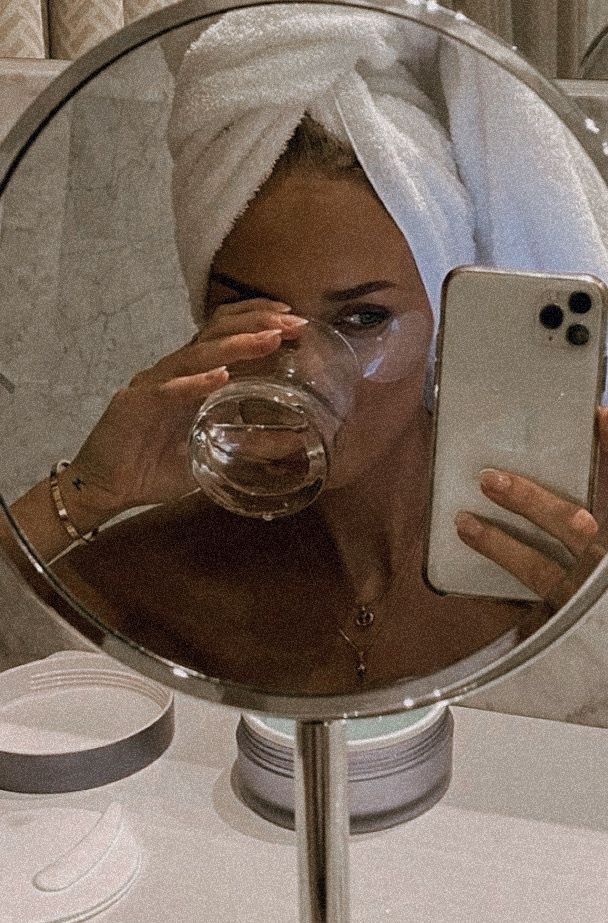
Staying hydrated without drinking too much is important in the evening. Drinking enough water supports the body’s natural detox and keeps skin healthy.
She should aim for small sips of water throughout the evening. Drinking too much right before bed can cause waking up during the night to use the bathroom.
Warm herbal teas like chamomile or peppermint are great choices. They hydrate and have calming effects without caffeine. Avoid caffeinated or sugary drinks, which can interfere with relaxation and sleep quality.
A simple guide for evening hydration:
| Drink Type | Best Time | Benefits |
|---|---|---|
| Water (small sips) | Throughout evening | Hydrates without overload |
| Herbal tea | 30-60 min before bed | Calms, soothes digestion |
| Avoid caffeine/sugar | Evening onward | Prevents sleep disruption |
Unplugging and Digital Detox
Relaxing in the evening often means stepping away from screens and finding calm in other activities. By managing screen use and trying tech-free hobbies, a girl can ease stress and rest better at night.
Limiting Screen Time
Reducing screen time before bed helps the brain slow down. She can set a specific cutoff time, like turning off all devices one hour before sleeping. This stops exposure to blue light, which can mess with natural sleep cycles.
Using features like “Do Not Disturb” or app timers also makes it easier to avoid distractions. Instead of scrolling social media, she can choose to read a book or listen to calm music. These habits create a clear break between busy online time and peaceful rest.
Being consistent with limiting screens helps improve focus and lowers feelings of stress. It also supports deeper, more refreshing sleep, so she feels ready for the next day.
Tech-Free Activities for Relaxation
After putting devices away, a girl can try simple activities that don’t involve screens. Hobbies like drawing, knitting, or cooking are good choices. These activities engage the mind gently and reduce tension.
Creating a cozy space, such as a tech-free zone in the bedroom, encourages relaxation. She might also try journaling thoughts or practicing light stretches to wind down. These moments away from screens help connect with herself in a calm, peaceful way.
Talking with family or friends in person can be part of this time too. Low-key conversations without screens make the evening feel more meaningful and restful.
Soothing Activities for Mind and Soul
Relaxation involves calming both the mind and heart with gentle, enjoyable actions. Simple habits like diving into a good book, reflecting on the day, or tuning into soft sounds can help ease stress and create a peaceful atmosphere.
Reading for Pleasure
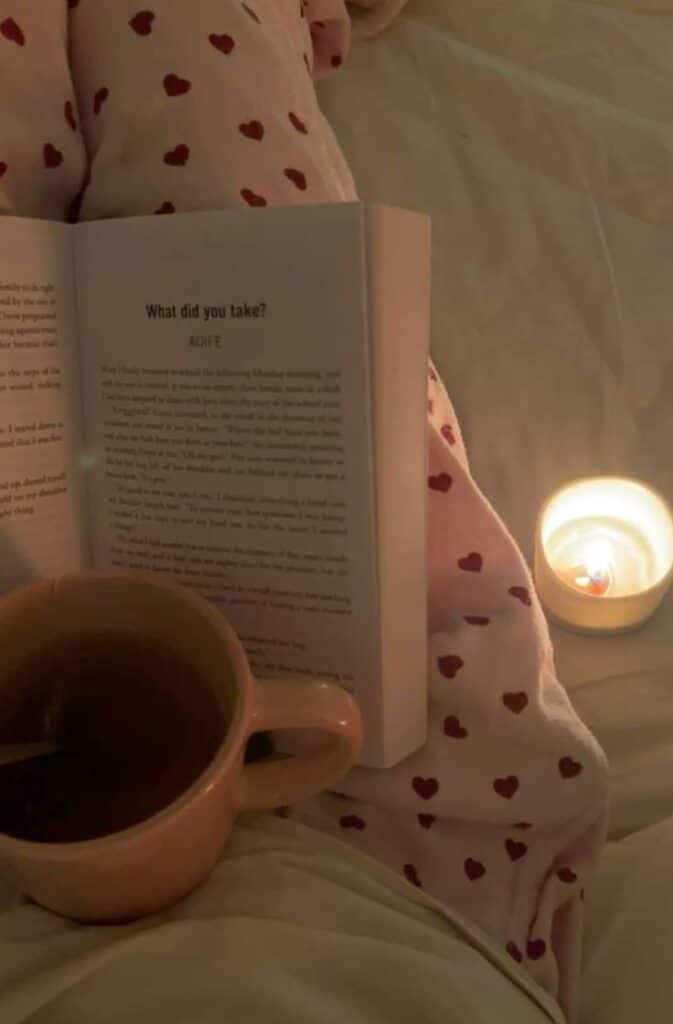
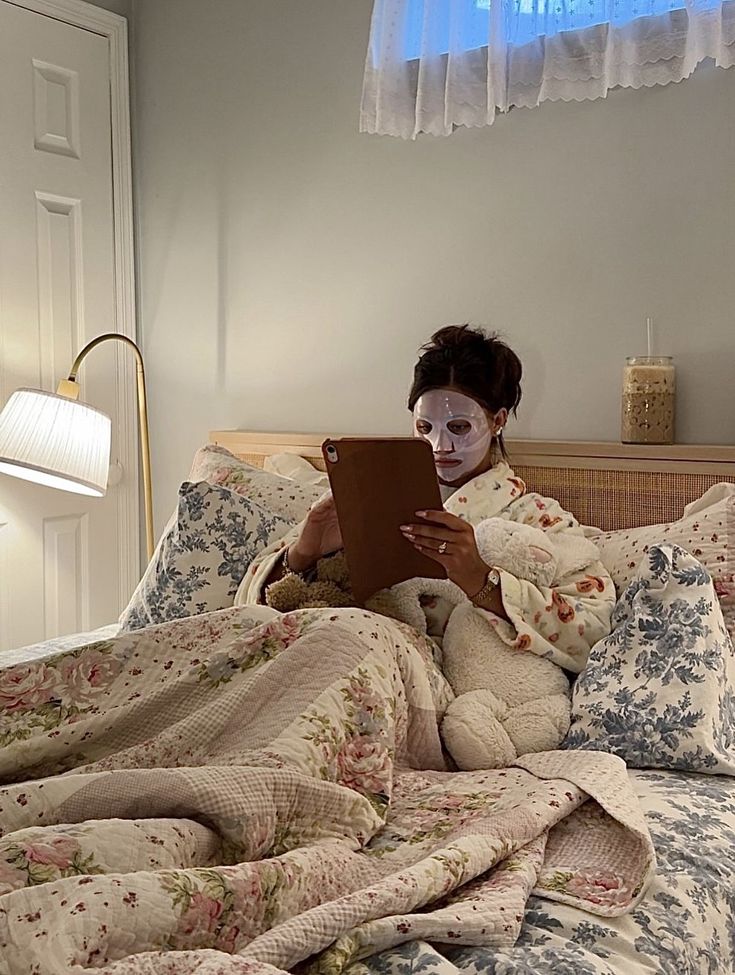
Reading something enjoyable helps shift focus away from daily worries. Whether it’s a light novel, poetry, or even short stories, picking up a book that sparks interest can relax the brain.
Choosing books with positive or uplifting themes can improve mood. She might set a goal to read for about 15-20 minutes, just enough to feel immersed but not tired. Using soft lighting also prevents eye strain and supports winding down.
This quiet time gives space for imagination to roam freely. It’s a break from screens and provides mental rest. Reading before bed can improve sleep quality by signaling the brain to slow down.
Journaling or Gratitude Practice
Writing down thoughts helps clear the mind. This could mean jotting down feelings, listing things she is thankful for, or recording daily highlights. The act of putting pen to paper makes emotions easier to understand.
A gratitude list can include simple things like a kind word, a good meal, or a fun moment. Focusing on these positives balances out stressful thoughts. Keeping the journal handy nearby encourages consistency.
Taking 5 to 10 minutes for this practice calms the mind and fosters a sense of peace. It also helps set a positive tone before sleep. Journaling releases worries instead of keeping them bottled up.
Listening to Calming Music
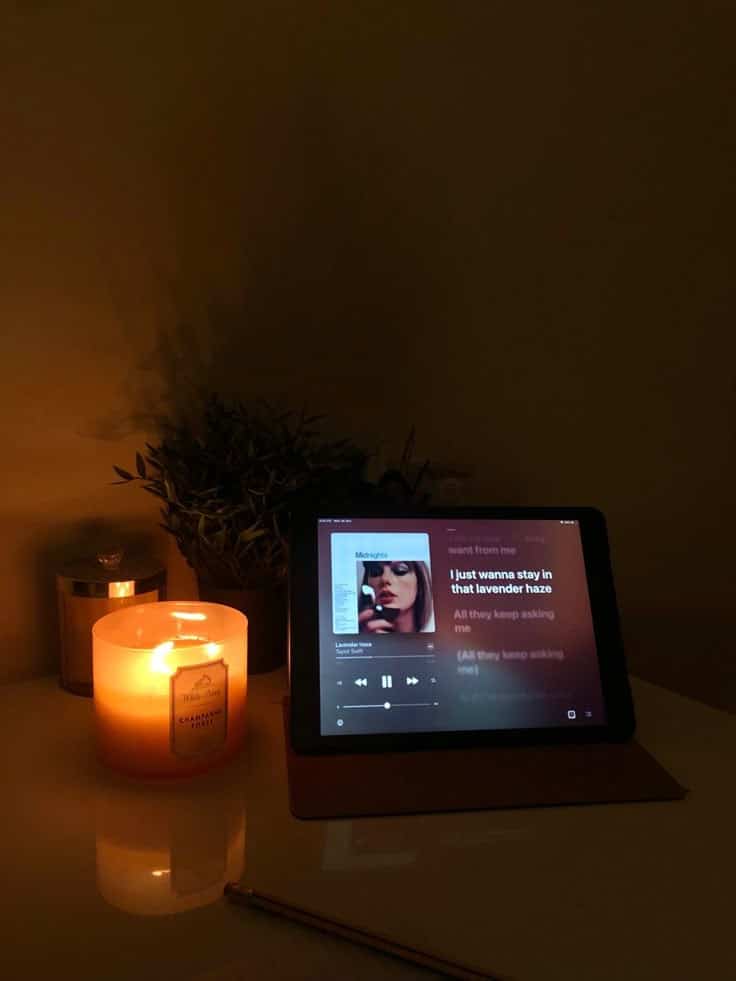
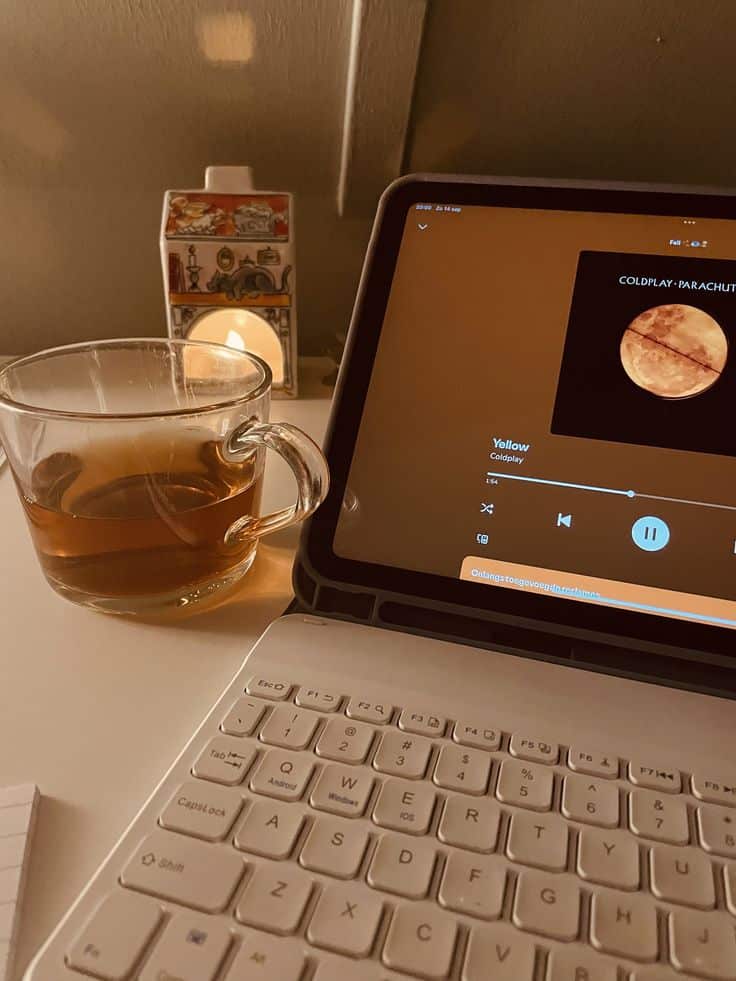
Soft music soothes the nervous system and creates a relaxing environment. Instrumental tunes, nature sounds, or gentle acoustic songs work well without distracting attention.
Choosing tracks with slow tempos supports lowering heart rate and easing tension. She can create a personalized playlist for evening use, ensuring each song promotes calmness.
Playing music quietly in the background offers a peaceful way to unwind. It can also mask noise that might disrupt relaxation. Listening for 20-30 minutes helps build a comforting routine that signals it’s time to rest.
Preparing for Restful Sleep
Good sleep starts with simple steps that help the body and mind shift into rest mode. Small habits before bedtime, regular sleep times, and a cozy bedroom all work together to make falling asleep easier and staying asleep more comfortable.
Bedtime Rituals
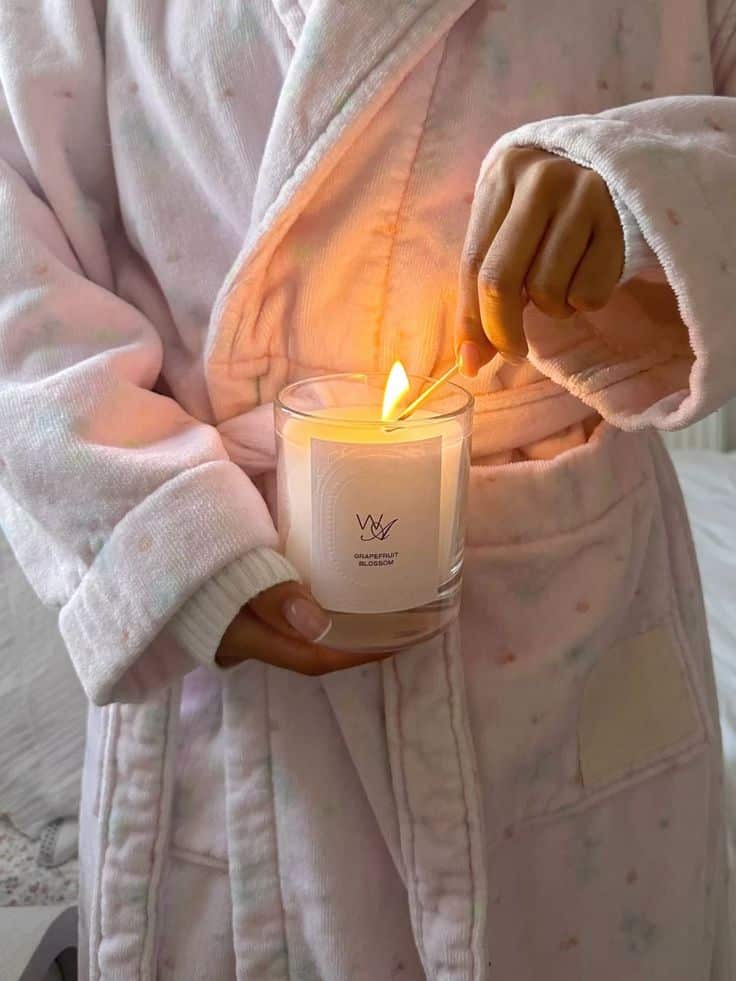
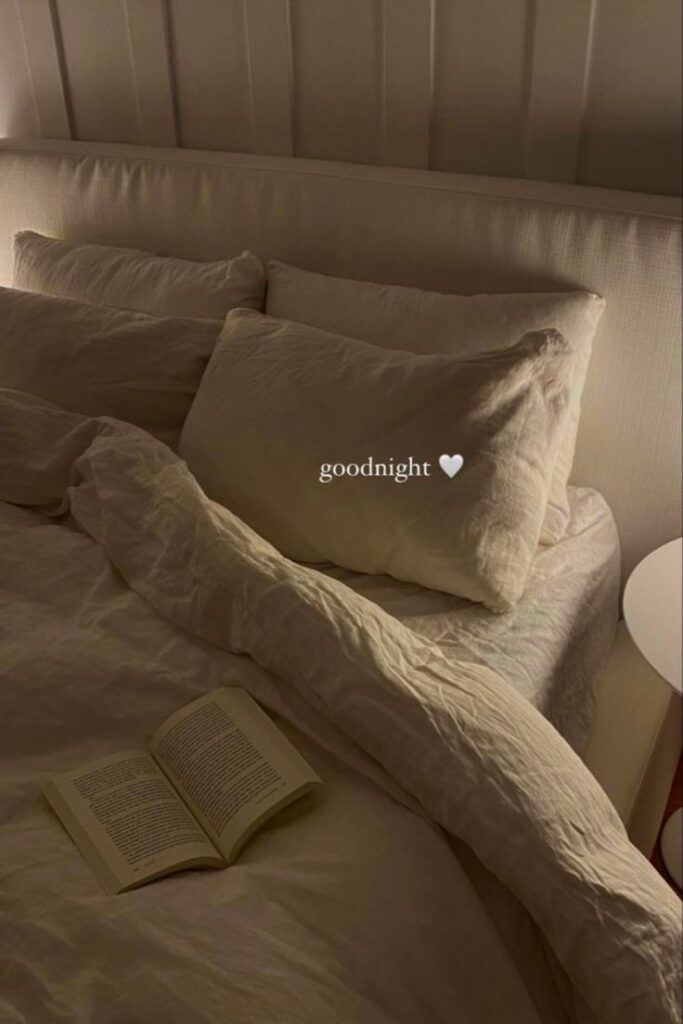
A bedtime ritual helps signal the brain that it’s time to wind down. This can include quiet activities like reading a book, listening to soft music, or doing light stretches. Avoid screens at least 30 minutes before bed, as blue light can keep the brain alert.
Some people find comfort in calming practices like journaling or deep breathing exercises. Routine actions such as washing the face, brushing teeth, and changing into comfortable pajamas create consistency. Preparing the bed by fluffing pillows and folding blankets also makes the space inviting and helps the mind feel ready for rest.
Setting a Consistent Sleep Schedule
Going to bed and waking up at the same time every day helps the body develop a natural rhythm. This regularity makes it easier to fall asleep without tossing and turning.
Even on weekends, sticking close to the usual schedule avoids disrupting the sleep cycle. A consistent routine trains the brain to recognize when it’s time for rest and when it’s time to be awake. This steadiness reduces sleep problems and helps a person wake up feeling refreshed and alert.
Optimizing the Sleep Environment
The bedroom should be a calm, comfortable place made for sleeping. Keep it cool, ideally between 60 to 67 degrees Fahrenheit, as cooler temperatures help lower the body’s core temperature for better rest.
Limit noise and light by using blackout curtains and earplugs when needed. Choose bedding that feels soft and supportive, and remove clutter that might cause stress. Avoid strong smells and harsh lighting before sleep — instead, opt for dim, warm lights or natural scents like lavender to create a peaceful atmosphere.
How can creating a peaceful atmosphere at home improve relaxation in the evening?
A calm and peaceful space with soft lighting, soothing scents, and a tidy environment helps set the mood for relaxation and makes it easier to unwind after a busy day.
What are effective ways to unwind physically and mentally before bed?
Changing into comfortable clothes, doing gentle stretching or light yoga, practicing mindful breathing techniques, and engaging in calming activities like reading or journaling help relax both the body and mind.
Why is it important to limit screen time before bedtime, and what are some alternative activities?
Reducing screen time prevents blue light exposure that can interfere with sleep cycles. Alternatives include reading, drawing, journaling, or listening to soothing music to promote relaxation.
What are some tips for creating a sleep-friendly environment?
Keep the bedroom cool, dark, and quiet with comfortable bedding; use soft, warm lighting or natural scents like lavender; and keep the space tidy to promote a peaceful setting that encourages restful sleep.
What are some simple habits to help establish a relaxing evening routine for better sleep?
Simple habits like skincare, wearing cozy pajamas, lighting candles or soft music, and engaging in gentle activities like reading can create a calming environment that prepares the mind and body for restful sleep.
- 0shares
- Facebook0
- Pinterest0
- Twitter0


